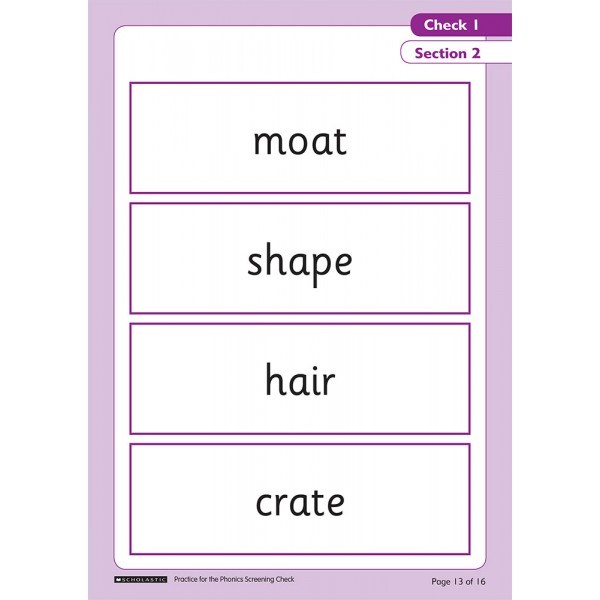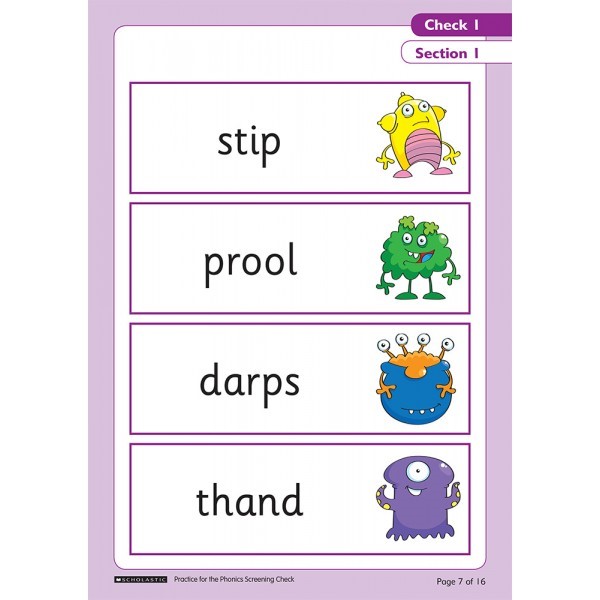Phonics
ACET Phonics
Staff are knowledgeable about teaching early reading. They teach phonics lessons in a consistent way. Pupils read with increasing accuracy and fluency as they progress through the school. Pupils who struggle are well supported by adults. This helps them to catch up with their peers. Pupils’ secure knowledge of how to read prepares them well for learning across the wider curriculum.
Ofsted July 2023
At Waverley Junior Academy we follow the ACET Phonics and Early Reading Programme. This is a validated systematic, synthetic programme that was developed by experienced teachers and Phonics Leads across our trust and in collaboration with an English Hub. The ACET programme is ambitious and has been designed to continually consolidate previously taught phonics while children are acquiring new knowledge. At Waverley we passionately believe reading is the key to a child’s success and we aim for all our pupils reach their full potential.
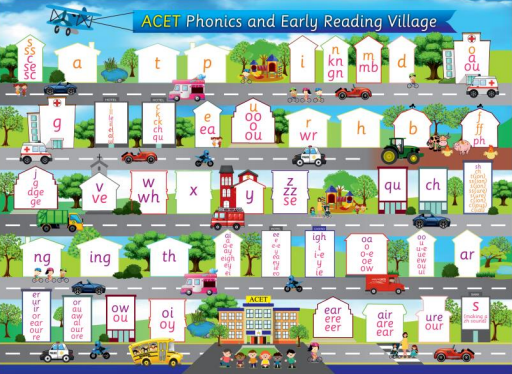
Systematic Synthetic Phonics
Systematic Synthetic Phonics (SSP) is a structured and cumulative method of teaching pupils to read and spell. The ‘synthetic’ in SSP comes from the synthesising or ‘blending’ of sounds to make a word. The ‘systematic’ represents a bottom-up approach, in that lessons begin not with whole words but with sounds first. In SSP words are broken up into the smallest units of sound (phonemes) and pupils learn how to blend these sounds together to say or read words. Children are also taught how sounds are represented as letters or groups of letters (graphemes) and how they can ‘segment’ these sounds to spell.
Overview
The ACET Phonics and Early Reading Programme has been divided up into six clear phases. Additionally, each phase has then been divided into sub-phases. Children begin Phase 1 activities in Nursery and should have completed Phase 5F by the time they leave Year 1. Pupils then access phase 6 (spelling patterns) in Year 2.
The phonics progression chart below shows the phase pupils should be secure with to be age related at the end of each half term.
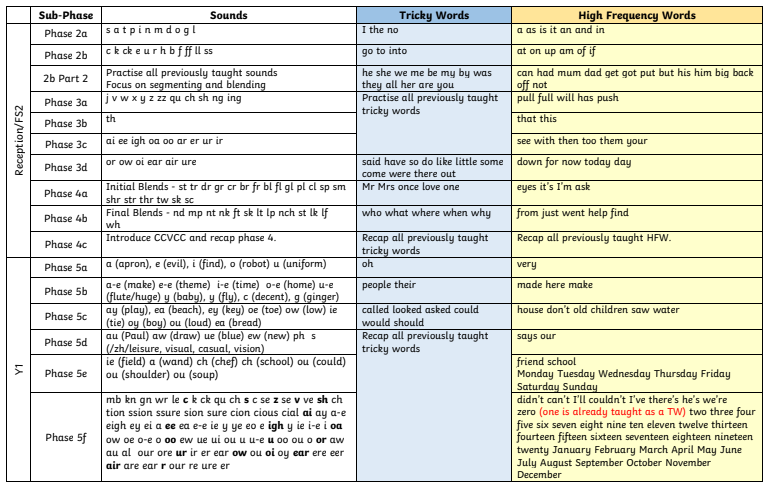
The Lesson Sequence 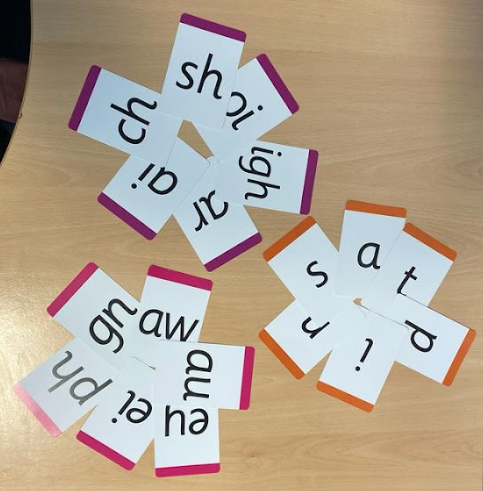
At Waverley we understand that children learn best when there is consistency and familiar routines in place. From FS2 when formal phonics begins, our phonics lessons follow the same structure from phase 2 to the end of phase 5. This is essential for developing their confidence in phonics and application to wider curriculum learning. We follow the structure of revisit, teach, practise and apply.
Assessment for learning (AFL) takes place throughout the lesson. Any misconceptions of pronunciation, reading and spelling with GPCs are addressed with instant feedback.
Please click here to download an example of the ACET Phonics planning
Assessment
Assessment is a fundamental part of the ACET Phonics Scheme. Upon entering Reception all children are baselined using the phase tests. Phase tests are then completed, one-to-one, every 6 weeks as a minimum, on the relevant phase (see assessment schedule below). These assessments allow our practitioners to establish which phase each the child needs to learn, what gaps they have to fill and what book they should take home. The phase tests are divided into the sub-phases and assesses the child’s ability to; recognise sounds, read words containing certain sounds, read tricky and high frequency words and read sentences. They also allow staff to gauge each child’s level of fluency.

Once the phase tests have been completed, this information and is used to ‘stream’ the children into specific phonics groups. This means a child is placed in a specific group relevant to their need rather than their year group. Groups are based upon what the child needs to learn next. It is important that children are closing gaps and are therefore placed in a group where their next steps will be covered.
Decodable Books
The ACET SSP has been designed around the Floppy Phonics books from Oxford Reading Tree. The progression is ambitious and allows opportunities for pupils to embed their knowledge and become fluent readers. The most important part to note is that no child will read a book where they have not been taught the sounds. For example, a child will only bring home a 3a book when they have been taught all phase 3a sounds.
Read and Repeat
The ACET SSP encourages the children to complete a ‘Read and Repeat’ cycle to support their fluency development. It also promotes a love of reading and the importance of discussion around stories. This means each week (for the whole week) each child accessing phonics will take home –
- One phonic reading book from their current sub-phase for them to read to their parents/ carers.
- One ‘reading for pleasure’ book from the school library for their parents/ carers to read to/with them.
Your child should be able to read their phonics book independently and with 100% accuracy. By the end of the week they should be reading this at a quicker pace.
Reading for Pleasure
Reading should be at the heart of any curriculum and is a key driver in Waverley. We aim for every child to become a fluent reader and from the start of their journey with us, pupils are encouraged and supported to develop a love of reading.
All our classrooms are language-rich environments where adults talk with children throughout the day. We recognise the more children take part in conversations, the more they will understand once they can read and the more vocabulary and ideas they will have to draw on when they can write.
We ensure all pupils have access to fun reading-based activities such as group story times, role play and exploring poems and rhymes.
Additional Support for Pupils
The ACET SSP underpins the aim that every child will learn to read. In order to achieve this, pupils will need to learn to ‘crack the phonics code’. For some pupils this may take longer and therefore additional support that is responsive to their specific needs is put in place.
Our Catch Up Programme (CUP) has been designed to support pupils who are working towards the expected standard of phonics. Our rigorous tracking highlights pupils at risk of falling behind, enabling early identification and additional provision to meet their needs. The structure of the CUP is that in addition to their daily phonics lesson pupils access a 15-minute session delivered using the same structure but with a quicker pace, including word level and sentence level reading and writing.
Interventions
For any child working behind the age related expectations of the programme’s overview, interventions are quickly put in place. Below is an outline of each of the interventions and their purpose.


Resources
Helpful Guides
A Guide to Phonics and the Early Years
A Guide to Phonics and the Year 1 National Curriculum
A Guide to Phonics Terminology
A guide to reading with your child
Useful Websites
Useful Videos
What is the Phonics Screening Check?
What are alien words and why do we read them?
Year 1 Phonics Screening Check
This is a formal test that the children take at the end of Year 1. They will complete it 1 to 1 with a teacher in school. The test is a list of 40 real and pseudo (alien) words. As a child goes through the test they are expected to apply more advanced phonics skills. The pass mark changes year to year but it is usually 32+. Children who do not pass in Year 1 are required to retake the test at the end of Year 2.
At Waverley Junior Academy we will prepare children for this test from FS2 onwards in an informal and fun way. Children will practise the skills need to pass through games and hands on activities. Their progress will be tracked and shared with parents regularly and any additional support needed with be put in place.
